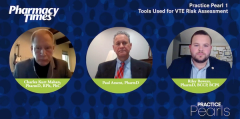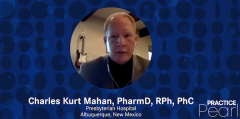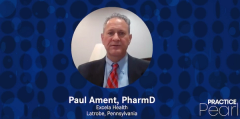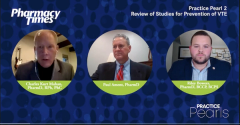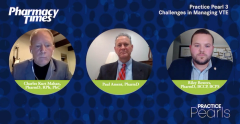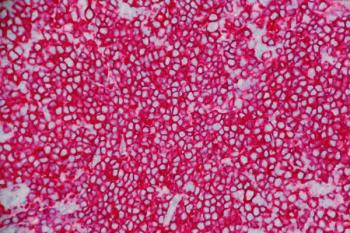
Practice Pearl 1: ISTH Recommendations & Pharmacists’ Role in Identifying Risk of VTE
Episodes in this series

A panel of experts share the ISTH recommendation and the pharmacist’s role in helping identify patients at increased risk of VTE.
Charles Kurt Mahan, PharmD, RPh, PhC: Let’s shift into ISTH [International Society on Thrombosis and Haemostasis] recommendations for risk assessment in hospitalized patients. Let’s get a few quick comments from the 2 of you on World Thrombosis Day and the global call to action for risk assessment in patients.
Riley Bowers, PharmD, BCCP, BCPS: In 2016, the ISTH steering committee put out a call to action for institutions to implement some sort of risk assessment of VTE [venous thromboembolism] in all hospitalized patients, which was being driven by the fact that VTE is regarded as 1 of the most preventable deaths.
Something I liked was that, within the call to action, they made a very compelling statement. It’s very simple: We cannot let perfection become the enemy of good. I like this because it pushes us as clinicians, as providers, to make a decision not to wait for a gold standard tool to be developed. When you’re able to prevent 30% to 40% of all the VTE cases based on the literature, this call to action has a lot of driving force behind it.
Paul Ament, PharmD: To add to that, Riley, is the fact that we should have actually taped this on October 13, which was World Thrombosis Day. There is also something that really raised awareness. In 2003, there was an NBC reporter by the name of David Bloom. He was on assignment. He died of a fatal pulmonary embolus at age 40, and his wife got involved with raising awareness.
His risk factors were the long plane ride over to Iraq, and then for 1 assignment he was in a tank with the military. Those are probably the risk factors. From that time on, you saw that the Joint Commission and National Quality Forum, Centers for Medicare & Medicaid Services, and even the surgeon general’s office were putting out some strong positions about VTE awareness and risk assessments.
Charles Kurt Mahan, PharmD, RPh, PhC: Let’s shift to what you think the pharmacist’s role is in helping identify patients at increased risk of VTE and how you would weave that into multidisciplinary team efforts.
Paul Ament, PharmD: Being in direct patient care is important from the pharmacist’s perspective. Being the drug experts, we can focus more intently on that patient. The physicians and clinicians these days have so many pressures put on them from diagnosis and insurance authorizations that they may sometimes lose the direct focus of some of these important clinical situations.
In addition, with the multidisciplinary teams involved, I gain a lot of information from the physical therapists [PTs], who are assessing and looking at the mobility of these patients. But it is certainly a team approach. As I said in the order sets that we have built in [at Excela Health], it certainly makes it much easier these days because a clinician can’t get past risk assessment with their admission orders.
Riley Bowers, PharmD, BCCP, BCPS: I tell this to my residents and students often: I’m a firm believer that anticoagulation stewardship is every bit as important as antimicrobial stewardship. I’m obviously
biased as the cardiology guy at Campbell [University], but I feel that there’s a ton of opportunity there for pharmacy involvement.
We have protocols built in place so that, in every patient, in every chart review, and in every order set entry, we’re assessing VTE prophylaxis. But I’m not sure that that’s enough. Even with the flags, the triggers, and the protocols, there are still workarounds, so it needs to be something on the forefront that’s being actively talked about in the interdisciplinary sessions.
Charles Kurt Mahan, PharmD, RPh, PhC: These are great points. I’ll add that the mobility is very important, so using that team approach with PT is a brilliant idea. Our PT is very involved in rounds. This risk remains. There are data out to 90 days after the hospitalization, and there were some data a few years ago in the medical patients even out to 4 months after hospitalization. It’s all about prevention, prevention, prevention.
Newsletter
Stay informed on drug updates, treatment guidelines, and pharmacy practice trends—subscribe to Pharmacy Times for weekly clinical insights.




